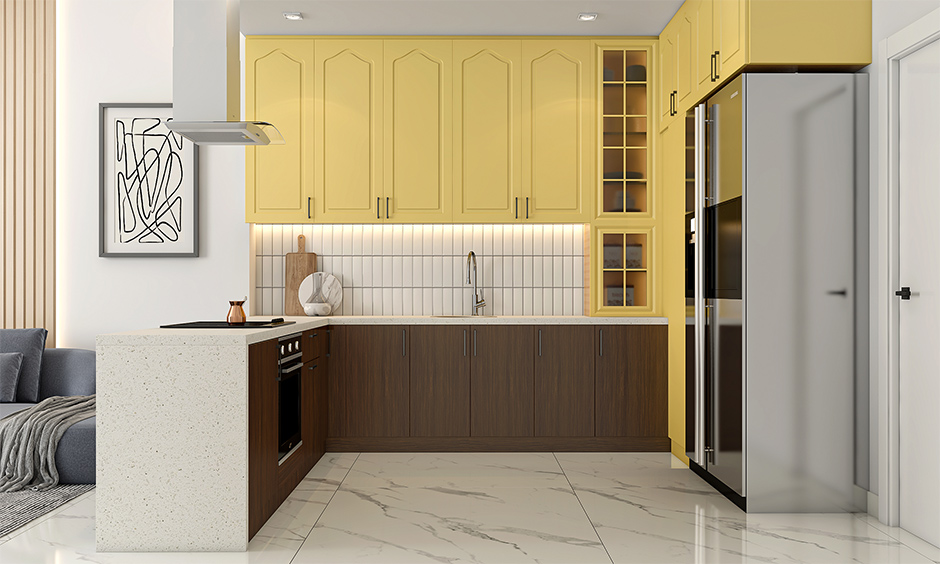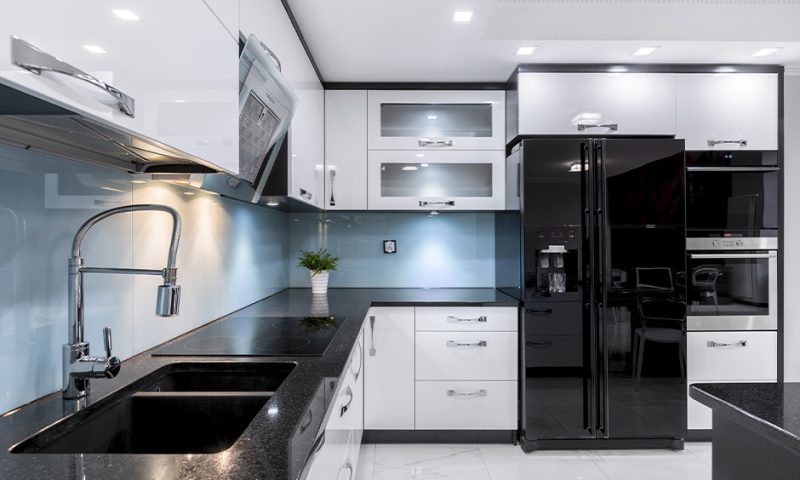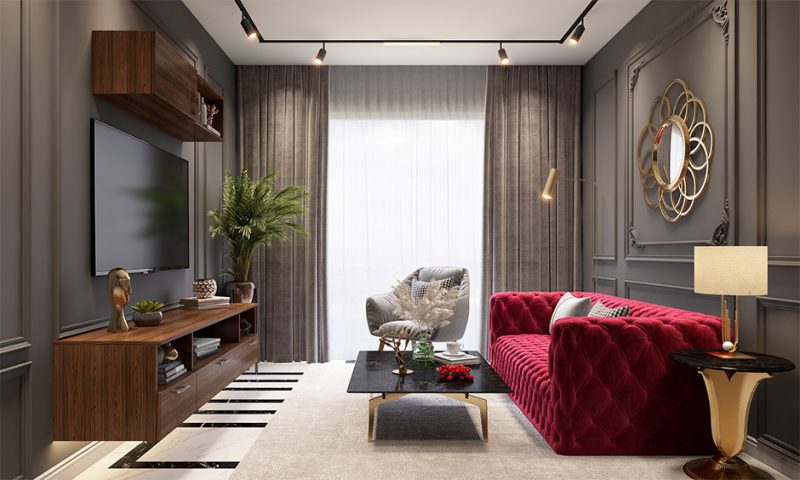A Complete Guide to Membrane Finish

Are you someone who loves perfection? Whether it’s carefully matching the shades of cutlery or perfectly tucking the bedsheet in the corners—if finesse is your style- membrane finish is your match!
There are multiple finish options in the market, such as acrylic finishes, PU finishes, laminates, veneers, and more! But this one showstopper in town or in stunning homes is the membrane finish. Read on to learn what makes this special and how you can use it in your dream abode.
What is a Membrane Finish?
A membrane finish, also known as PVC (Polyvinyl Chloride) foil, is a type of surface finish pressed on MDF or other wooden surfaces. It involves using a thermofoil vacuum press machine to heat and press this flexible PVC foil. The best part? Unlike all other finishes that use edge bands for the corners, a membrane finish can wrap the complete surface, including the corners, creating a smooth, clean, and perfect finish.
The Process of Membrane Finish Application
There are some exquisite furniture or decor pieces that we can’t look away from, such as a solid wooden table with an intricate design or a curvy shutter design. These look so smooth because the membrane finish hugs every curve.
Here’s how that is done:
Step 1: Preparation: The MDF or any surface is first cut and shaped according to the surface it needs to cover.
Step 2: Application of Adhesive: A strong adhesive is applied onto the surface so the membrane foil sticks to it properly.
Step 3: Pressing: The membrane foil is then heated to make it pliable. The surface is placed in the thermofoil vacuum press, where the PVC foil is pressed onto it. The vacuum ensures the membrane completely covers the surface, including edges and curves. The result is a smooth, seamless piece of furniture.
Step 4: Cooling: After this, the surface is left to cool, and the excess foil is trimmed away.
Membrane Finish Catalogue Options
Membrane finishes come in multiple styles and designs for different preferences and budgets.
- Matte: The matte finish provides a very sophisticated, soft-looking surface that looks elegant and easily hides imperfections. It is popularly used for cabinets and wardrobes.
- High-Gloss: A highly reflective finish that shines and brightens the space, popularly used to create luxurious-looking interiors.
- Textured Wood Grain: You can add a textured, grainy vibe to your kitchen cabinets and furniture, not just on the walls. A grainy finish provides a very rustic, earthy-looking interior.
Advantages of Membrane Lamination
- Seamless Edges: Unlike other laminates, which use edge bands that look visible and unaesthetic, the membrane finish looks sleek. It is flexible enough to completely cover the surface, including sharp edges.
- Durability: These finishes are water and scratch-resistant, which means the home interiors last longer and eliminate the need for periodic renovations.
- Easy Maintenance: It has a smooth look, which makes it easier to clean and wipe away dust. (There are no open corners or edges for the dust to hide!)
- Buffet of Designs: This finish comes in a variety of colours and designs that can fit any home interior style you want – modern, traditional or rustic. You name it, you can have it.
Membrane Finish: Where to Use?
Membrane Finish Kitchen
One of the most popular uses of this style is in the kitchen. Kitchens are wet areas and prone to staining. Given membrane laminate’s resistance powers, you can easily get your cabinets and drawers laminated in it.
Membrane Finish Wardrobes
They are also used in wardrobes, as they give a very clean, smooth, and modern appearance. However, they can discolour with constant sunlight exposure.
Membrane Finish Shutters
The shutters can be designed in any pattern you like—curves, textures, intricate designs, and more. This is the best material to use to show off your shutters nicely! It can also be used on headboards, TV units, and other furniture pieces.
Membrane Finish Cost? Membrane vs Other Finishes!
- Laminates: Laminate finishes are more resistant to heat and have visible edge bands. They offer durability and a smooth, seamless finish.
- Acrylic: Acrylic finish offers a more luxurious-looking surface but is expensive and prone to scratches.
- Veneers: Veneers are great for replicating natural wood but are expensive and require more maintenance.
Membrane finishes are a rising trend that ticks the boxes of style, affordability, and convenience. Their durability, easy maintenance, and design versatility have made them a popular choice among homeowners. Whether you want a traditional bedroom, a modern kitchen, or a contemporary living room, we are sure membrane finishes have something in store for your dream home.
We hope this blog helps you make the right choice for your home. If you are planning new home interiors, don’t forget to connect with DesignCafe for amazing offers, a 10-year warranty, and 51,040 design styles to choose from.
Book a Free Consultation Today!
Also, Check Out The Difference Between A Material And A Finish
FAQs on Membrane Finish
1. What is a Membrane Finish?
A membrane finish, also known as PVC membrane or membrane pressing, is a surface treatment where a thin PVC foil is applied to a surface like MDF (Medium-Density Fiberboard). This foil is then heated and vacuum-pressed onto the surface, including the edges, creating a seamless look.
2. What are the primary benefits of using a membrane finish?
- Seamless Appearance: Membrane finishes cover all edges without edge bands, creating a sleek and polished look.
- Durability: They are highly resistant to moisture, scratches, and general wear, making them suitable for wet areas like kitchens and bathrooms.
- Versatility: This finish can be applied to a wide range of designs, including complex shapes and curves, offering great design flexibility.
- Easy Maintenance: The smooth surface is easy to clean and maintain, requiring just a simple wipe with a damp cloth.
3. How long does a membrane finish last?
The longevity of a membrane finish depends on the quality of the material and the conditions in which it is used. Generally, a well-applied membrane finish can last anywhere from 8 to 15 years.
4. Are there any limitations to using a membrane finish?
- Susceptibility to Peeling: In high-moisture environments or if not properly maintained, the edges of a membrane finish can start to peel over time.
- Heat Sensitivity: It can warp or discolour if exposed to high heat for prolonged periods.
- Repair Challenges: Once damaged, this finish can be difficult to repair, and matching a replacement piece perfectly can be challenging.
5. In what types of surfaces can a membrane finish be used?
Membrane finishes are highly versatile and can be applied to multiple surfaces, including kitchen cabinets, wardrobes, interior doors, and custom-designed furniture. This flexibility makes them popular for residential and commercial interior design projects.
6. How does a membrane finish benefit kitchen cabinets?
Membrane finishes provide both aesthetic appeal and practicality for kitchen cabinets. The seamless design covers all edges and corners, enhancing the visual appeal, while the durable surface resists scratches, moisture, and stains.
7. What are the advantages of using membrane finishes in wardrobes?
Membrane finishes give wardrobes a refined, elegant look with their smooth, seamless surface. They are also durable, standing up well to daily wear and tear, which ensures that wardrobes remain looking new for years.







